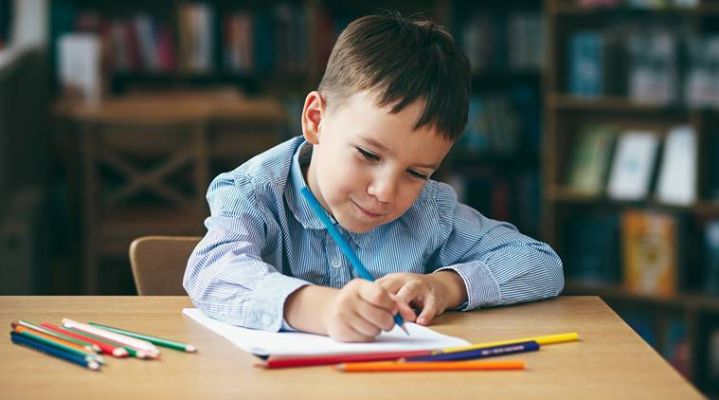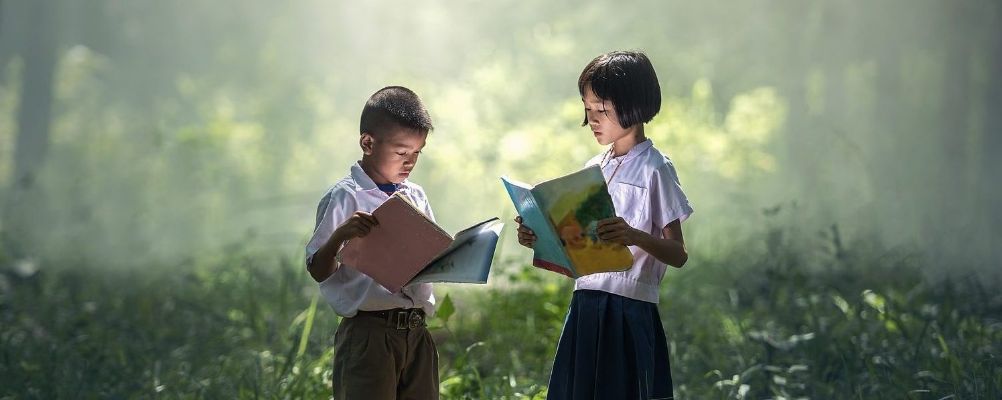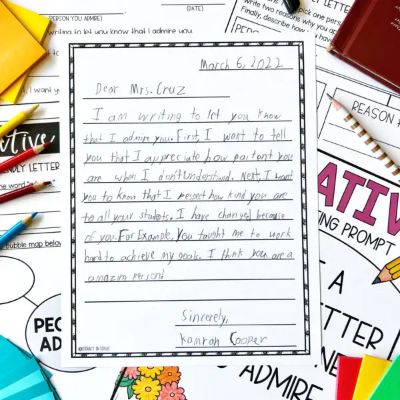Writing is important for kids because it helps them to communicate. It also helps them express their thoughts and feelings. Writing is an important skill for children to develop. When children learn to write, they can express themselves differently.
Writing helps children develop their thinking skills and vocabulary by allowing them to use words that aren’t always used in conversation, such as synonyms and antonyms, which are two words with opposite meanings, like tall vs. short or young vs. old. The more words a child knows, the more they can use them when writing or speaking with others; this also helps improve their communication skills!

How To Encourage Kids To Write?
If your child struggles with writing or needs extra encouragement, these tips will help them develop a love for writing and improve their writing skills.
Start with simple writing activities
For young children learning to write, start with simple activities such as tracing letters or writing their names.
Use visual aids

Incorporate visual aids such as pictures, charts, and diagrams to make writing more engaging and meaningful for children.
Provide a variety of writing materials
Provide various writing materials, such as pencils, pens, markers, and crayons to encourage children to experiment with different writing tools.
Create a writing center
Set up a writing center in the classroom or preschool with writing supplies and different writing activities.
Make writing a social activity
Encourage children to write with and for each other by providing peer feedback and collaboration opportunities.
Use technology
Incorporate technology such as computers or tablets to make writing more interactive and engaging for children.
Make writing relevant
Connect writing activities to children’s interests and experiences to make them more meaningful and relevant.
Celebrate writing
Celebrate children’s writing by displaying their work in the classroom or preschool or holding a writing showcase or competition.
Model good writing
Share your writing with children and provide examples of good writing in literature or other texts.
Provide positive feedback
Provide positive feedback and praise for children’s writing, focusing on their effort and progress rather than just the final product.
Fun Ways To Encourage Your Child’s Writing
Encourage your child to write by providing creative writing ideas for kids that are fun and educational. When you give your child a place to write and let them know their writing is important, you’re helping them develop their creativity and imagination.
The following are some creative writing ideas for kids:
Story writing prompts
Creative writing is all about using your imagination, so start by asking your child to develop an idea for a story. You can ask questions such as “What would happen if…?” or “If you could be any animal, what would you be?” This will get your child thinking about situations and characters and build their confidence in their writing skills.
Letter writing prompts

Instead of sending postcards or letters, try writing letters to family members and friends. You can share what you’ve been up to and what you like about your home, or even send them pictures of your pets (if they’re not too expensive).
Journal writing prompts

Keep a journal where you write about your thoughts and feelings every day or every week. This helps kids understand their emotions more clearly and learn how to control them more effectively.
Autobiography writing prompts
Write down everything that has happened in your life from birth until now — including memories, important events, and even dreams!
Poetry writing prompts
Poetry can be challenging because it’s often written in unusual ways — with different lines and rhymes, for example — but it’s worth trying because it’s so rewarding when done well. Ask your child to write a poem based on something they’ve experienced, seen, or heard. For example, if they’ve eaten at a restaurant with you, ask them to write a poem about the experience (what did they order? What was their favorite part?). If they’ve seen someone else perform at school, ask them to write about what it was like to see that person perform.
Create a storybook with your child
Encourage your child to create a storybook that has pictures of important people and events in their lives. The book can include pictures of family members, friends, pets, and other loved ones. It can also include photos of special occasions such as birthdays or holidays when everyone was together.
How To Write An Autobiography For Kids?
Here are some tips on how to write an autobiography for kids:
Choose a format
You can use many different formats when writing an autobiography for kids, such as a scrapbook, a photo album, or a traditional book. The format you choose will depend on your child’s interests and abilities and your preferences.
Brainstorm
Before you start writing, please encourage your child to brainstorm all the important events and milestones in their life. This could include things like their birth, their first steps, their first day of school, their hobbies and interests, and any challenges they have faced.
Create an outline
Once your child has brainstormed their ideas, help them organize their thoughts into an outline. This will help them stay focused and ensure that their autobiography has a clear structure.
Write the first draft
Now it’s time to start writing! Please encourage your child to write freely and express themselves in their unique voice. Don’t worry too much about grammar or spelling, as these can be corrected later.
Edit and revise
Once your child has completed their first draft, it’s time to go back and make any necessary edits and revisions. This could include fixing spelling and grammar mistakes, adding more details, or rearranging the order of events.
Publish and share
Once your child is happy with their autobiography, it’s time to publish and share it. This could mean printing and binding it into a book or sharing it online with friends and family.
By following these tips, you can help your child create an autobiography they will be proud of and treasure for years. It will help them develop their writing skills and encourage them to reflect on their life experiences and gain a deeper understanding of who they are.
Autobiography Examples For Kids
Reading examples of autobiographies written by other kids can be a great way to inspire your child’s writing and give them ideas on how to structure and present their own story. Here are a few examples of autobiographies for kids:
“My Life as a Fifth-Grader” by Samantha Smith
A fifth-grade student writes this autobiography and covers a wide range of topics, from her favorite hobbies to her experiences in school. It’s a great example of writing about different aspects of your life and connecting them to a cohesive story.
“All About Me” by Michaela Jones
This autobiography is more creative, with each page featuring a different drawing and a short paragraph about the author. It’s a great example of how to use visuals and creative elements to make your autobiography more engaging.
“Growing Up in the City” by Carlos Rodriguez
This autobiography is written by a child who grew up in the city and focuses on his experiences living in a diverse and bustling community. It’s a great example of how to write about your environment and its impact on your life.
“My Life with Autism” by Sophie Brown
A child with autism writes this autobiography and provides an honest and insightful look into her life experiences. It’s a great example of how to write about challenges and difficulties in an honest and inspiring way.
These are just a few examples of the many different ways that kids can write autobiographies. Encourage your child to find their unique voice and style and to write about the things that matter most to them.
List Of Famous Autobiographies
Here is a chart of famous autobiographies that are suitable for kids:
| Autobiography | Author | Age Range |
| The Story of My Life | Helen Keller | 8-12 |
| I Am Malala: The Girl Who Stood Up for Education and Was Shot by the Taliban | Malala Yousafzai | 10-14 |
| Brown Girl Dreaming | Jacqueline Woodson | 10-14 |
| The Diary of a Young Girl | Anne Frank | 10-14 |
| The Autobiography of Benjamin Franklin | Benjamin Franklin | 12-14 |
| Becoming Kareem: Growing Up On and Off the Court | Kareem Abdul-Jabbar | 10-14 |
| The Boy Who Harnessed the Wind | William Kamkwamba | 10-14 |
| My Life in Dog Years | Gary Paulsen | 8-12 |
| Funny in Farsi: A Memoir of Growing Up Iranian in America | Firoozeh Dumas | 10-14 |
| The Great Good Thing: A Secular Jew Comes to Faith in Christ | Andrew Klavan | 12-14 |
These autobiographies cover various topics and experiences, from historical figures like Benjamin Franklin and Helen Keller to modern-day activists like Malala Yousafzai. They offer insights into different cultures, experiences, and perspectives and can help children better understand themselves and the world around them.
Conclusion
Writing an autobiography can help kids reflect on their experiences, develop writing skills, and create a lasting keepsake. Reading famous autobiographies can provide inspiration and insights into the lives of remarkable individuals. Overall, writing an autobiography can be a valuable and empowering experience for kids, one that can help them grow both personally and academically.
